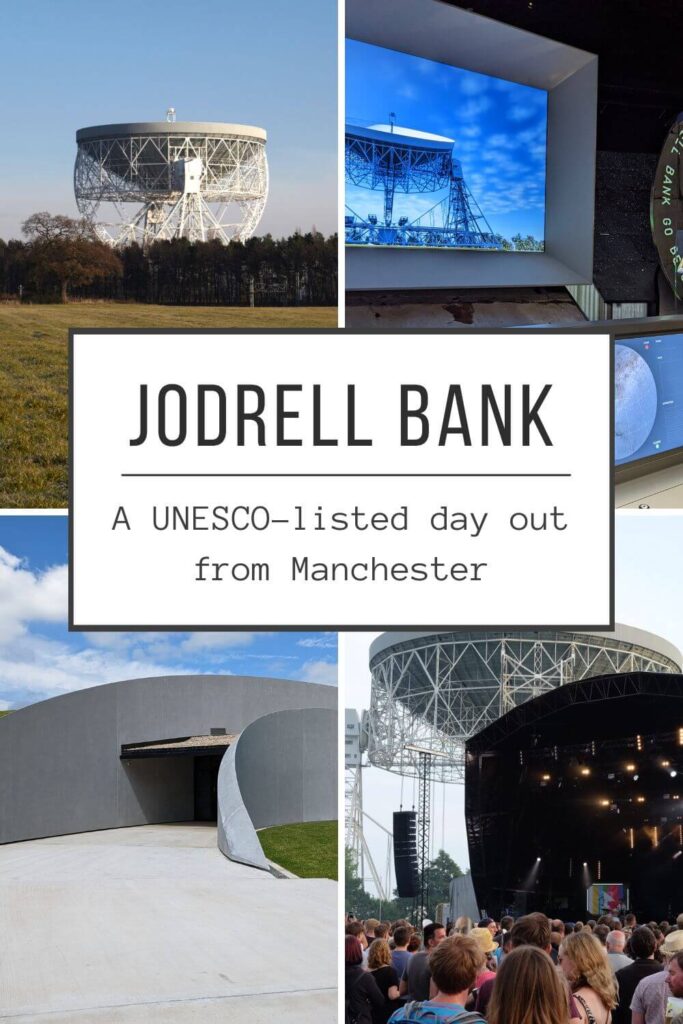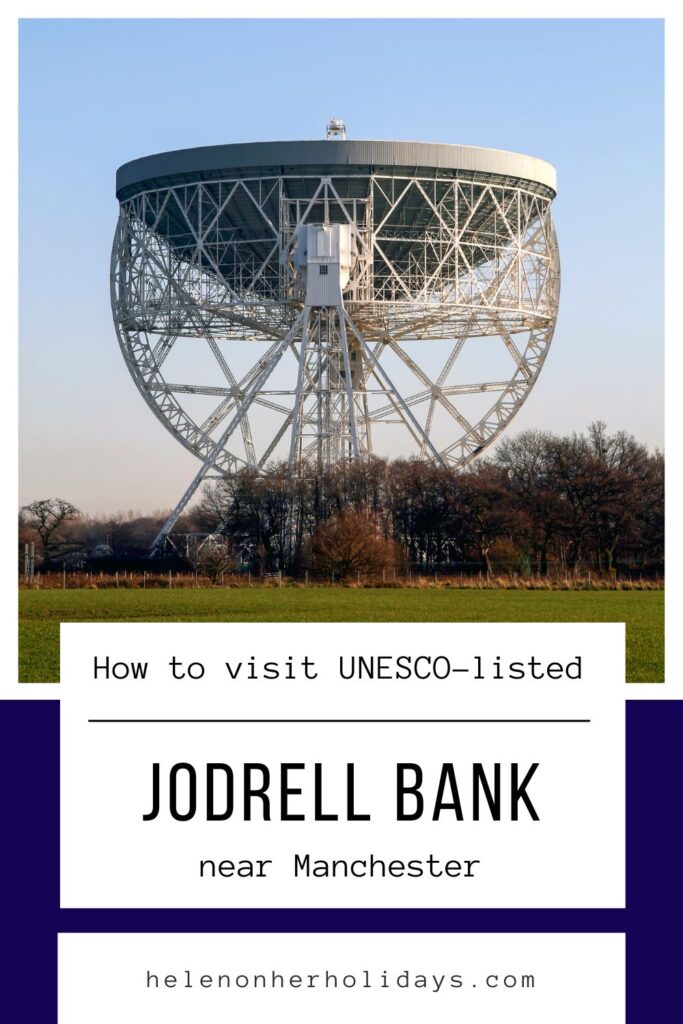You might have seen it on the TV, or you might have seen it as you’re landing at Manchester Airport, but have you visited Jodrell Bank?
The enormous dish of the Lovell radio telescope at Jodrell Bank observatory is one of the most recognisable landmarks in the North West of England. You can see it for miles around; you can even see it from where I live nearly 30 miles away. I first visited Jodrell Bank as a kid but I took a trip back there recently and had a fantastic time. Read on for why Jodrell Bank makes a great day trip from Manchester and how to get the most out of your visit.
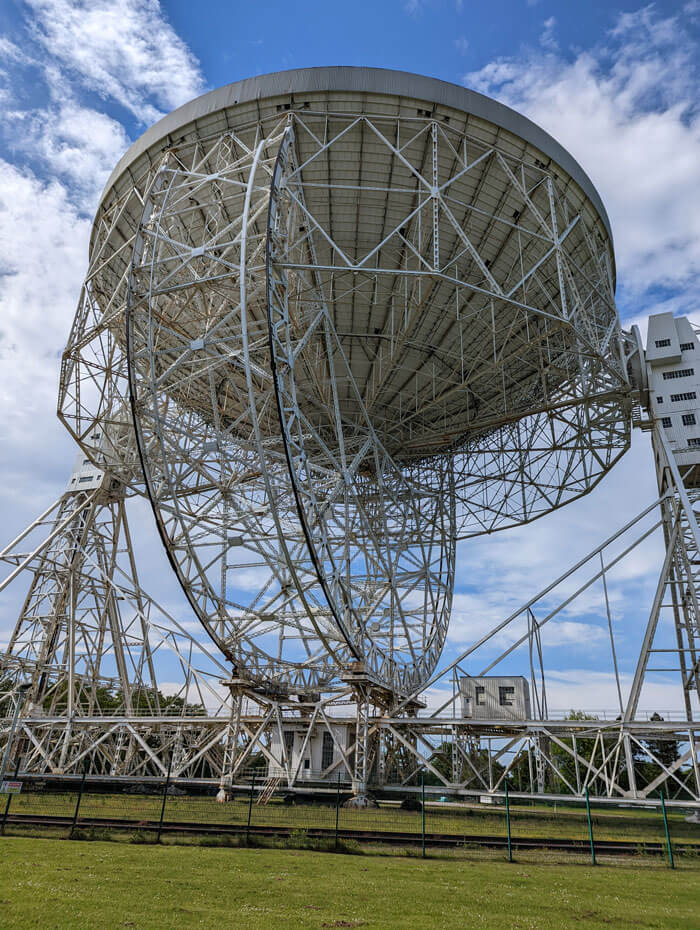
Is Jodrell Bank worth visiting?
Jodrell Bank is a superb day out with lots to see for everyone. There’s cutting-edge science here, of course (it’s still an active site, owned by the University of Manchester), but there’s also tons of history – most of which I had no idea about before I visited. The new visitor centre is stunning, while the grounds and arboretum are very serene. It’s also a great place for family days out, with activities for both adults and children.
Where is Jodrell Bank?
Jodrell Bank is in the leafy Cheshire countryside, not far from Knutsford and Macclesfield and 20 miles south of Manchester. One minute you’re driving along a windy country lane past farms and cottages, the next there’s a huge radio telescope right in front of you.
History of Jodrell Bank
In 1945, a physicist at the University of Manchester named Bernard Lovell was looking for a quiet site to observe cosmic rays. The university had a botanical research facility in the Cheshire countryside, and it was deemed to be the ideal spot. For the first couple of years, Lovell and his team observed meteors using ex-military equipment, some of which they converted into telescopes.
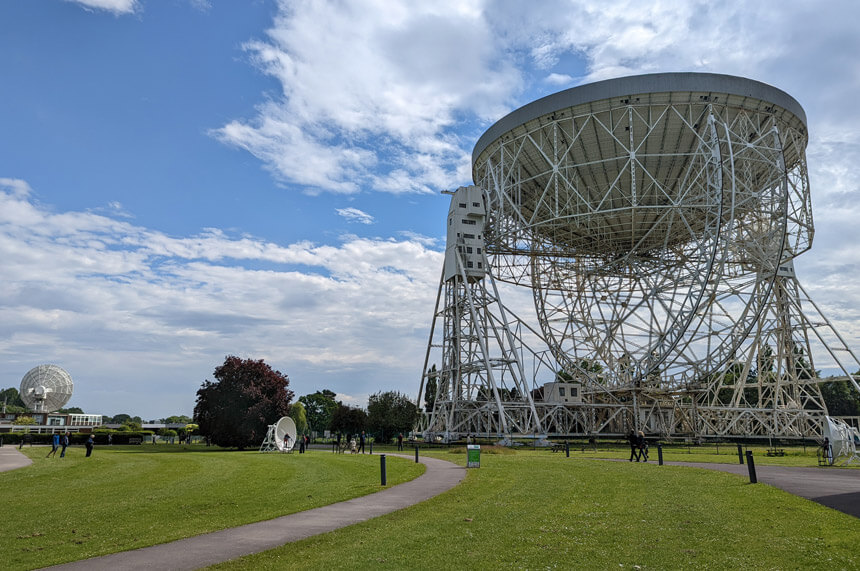
The huge Lovell radio telescope that Jodrell Bank is so famous for was built in 1957, and at the time was the largest steerable dish telescope in the world; it’s still the 3rd largest. Gun turrets from two Royal Navy battleships were used to construct the motors which allow the dish to turn and tilt.
Jodrell Bank and the Lovell telescope gained worldwide fame only weeks after it began operations. The Soviet Union launched the world’s first artificial satellite, the Sputnik 1 in October 1957, and Jodrell Bank’s telescope was the only one in the world able to track it. Since then, the Lovell telescope, along with the other telescopes at Jodrell Bank has tracked space missions, helped astronomers make groundbreaking discoveries and searched for extra-terrestrial life.
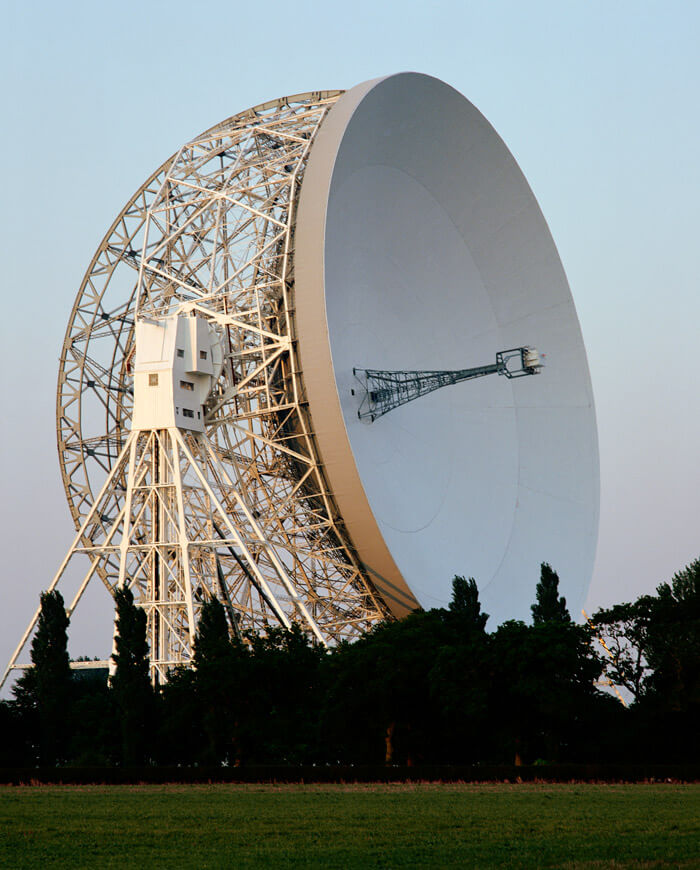
A UNESCO World Heritage site
In 2019, Jodrell Bank Observatory was inscribed on the list of UNESCO World Heritage sites in recognition of its contribution to science and astronomy, its connection to a significant period of human history and because of how complete the site is, despite still being an active research centre.
Things to do at Jodrell Bank
There are loads of things to do when you visit Jodrell Bank – especially now the new First Light Pavilion has opened.
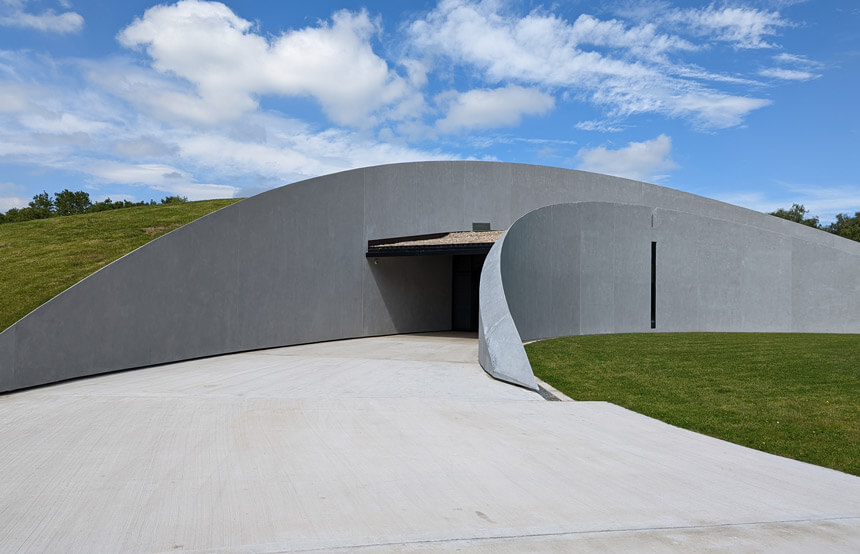
Explore the story of Jodrell Bank at the First Light Pavilion
The new First Light Pavilion opened on 4 June 2022. It’s the first place you’ll see when you visit Jodrell Bank, and it’s quite a sight. The building is covered in grass, and shaped like a dish facing downwards, with the same dimensions as the Lovell Telescope.
Inside, you’ll find an amazing exhibition on the history of Jodrell Bank, from its earliest beginnings to its role today. It’s not exaggerating at all to say that it’s one of the best museums I’ve ever been to; the interactive exhibits are really well done, and the films and animations really bring the story to life. Some of the films and displays are even shown on old sections of the Lovell telescope’s dish.
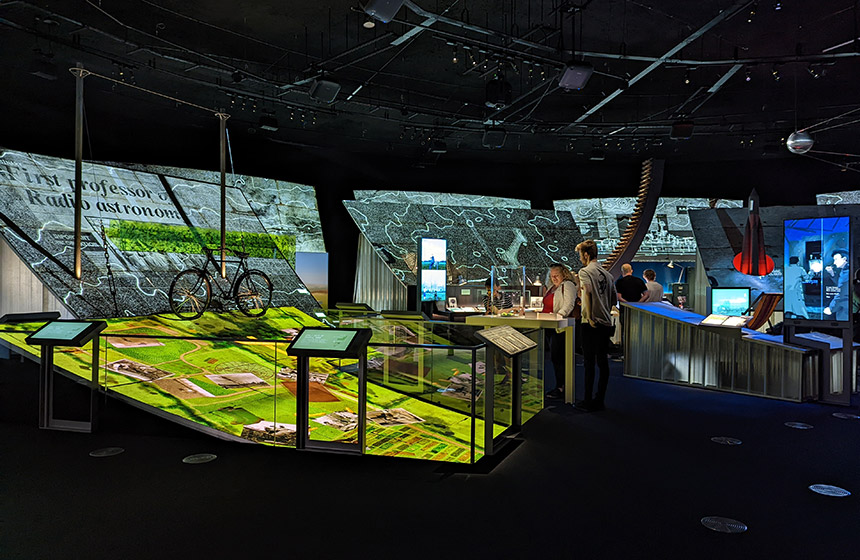
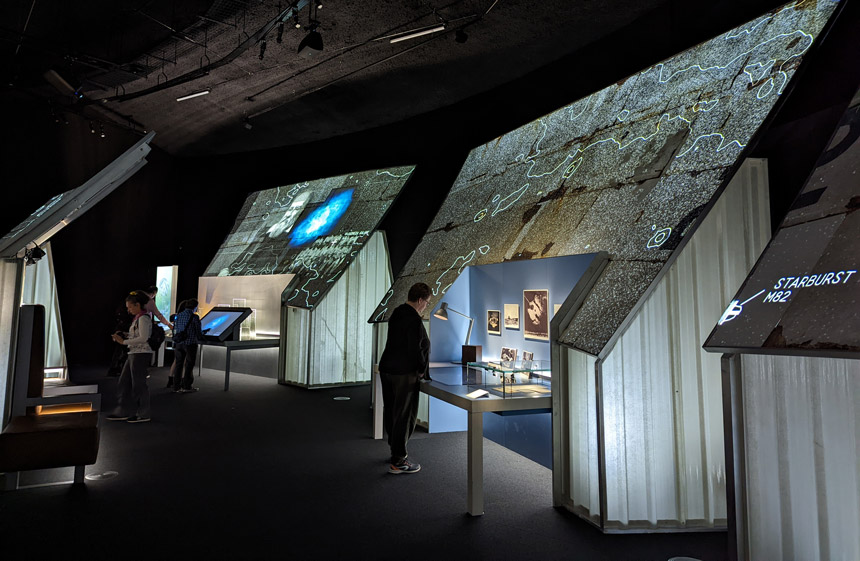
Watch one of the Dome Shows
Also in the First Light Pavilion, you’ll find the Space Dome auditorium with a giant curved screen which shows immersive films about the observatory and the stars. I’d found the exhibition so interesting that I just wanted to hear more about the history, but the scale is really impressive. Sit in a middle row for the best view.
Visit the Space Pavilion to learn more about radio astronomy
The Space Pavilion is one of the older buildings at the observatory and holds an exhibition about the science of radio telescopes. There’s also a classroom for schools or groups.
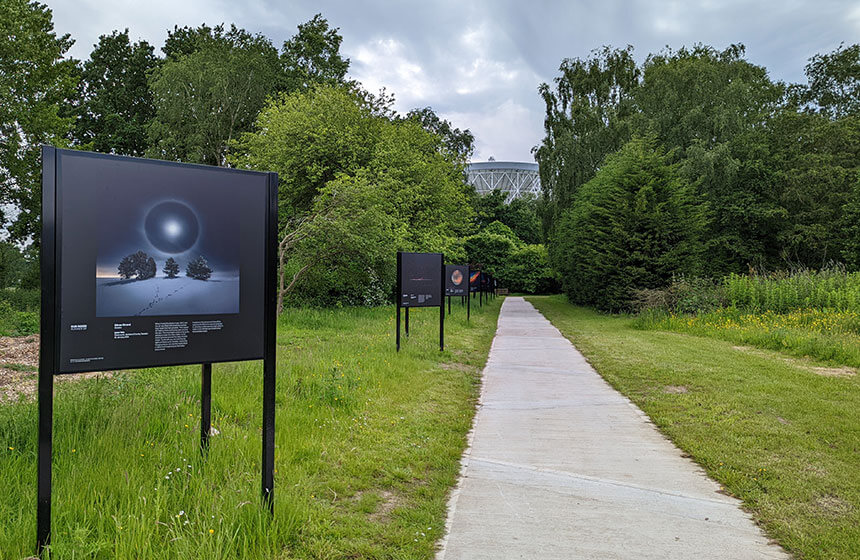
Try the Whispering Dishes
These are so much fun! The Whispering Dishes are two small parabolic dishes set 40 metres apart, in the shadow of the giant Lovell telescope.
Set yourselves up with one person facing into the first dish and another facing into the other, then try whispering into the dish. The sound comes through incredibly clearly even though you’re stood 40 metres apart and with your backs to each other. The exhibit really helps to give you an idea of what the Lovell telescope is doing.
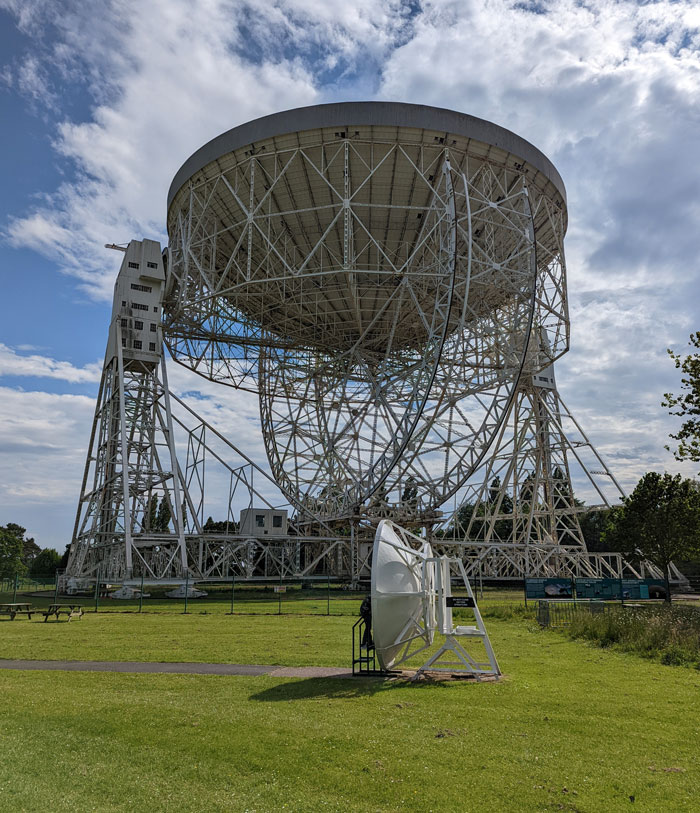
Wonder at the Lovell telescope
As the star of the show, you can’t visit Jodrell Bank without wandering around the base of the Lovell radio telescope. There’s a semi-circular walkway which allows you to get fairly close; as you look up at it it’s difficult to comprehend all the amazing discoveries this great dish has been part of. I found it very serene and beautiful.
As you’re walking around the Lovell telescope you’ll also see some of Jodrell Bank’s other radio telescopes and other equipment, along with the low-rise buildings where astronomers still work today.
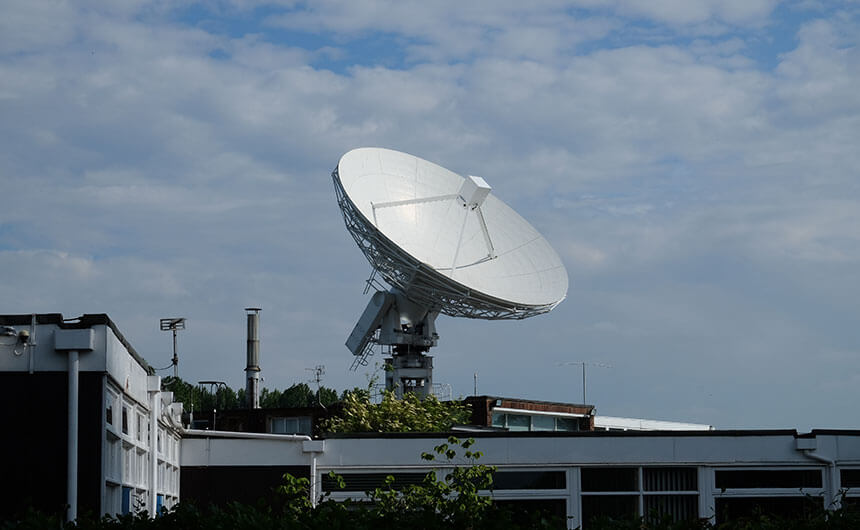
Would you like to save this?
Events at Jodrell Bank
Jodrell Bank hosts a wide of events, exhibitions, talks, film showings and workshops, from family stargazing sessions to astrophotography workshops. You can see details of events at Jodrell Bank and book online by going to their what’s on page.
Bluedot festival
Bluedot is a space and science-themed festival which takes place over three days each summer at Jodrell Bank. The music stage always manages to attract big-name music acts (often with a technological slant) and there are lots of interesting talks and activities, including many aimed at children.
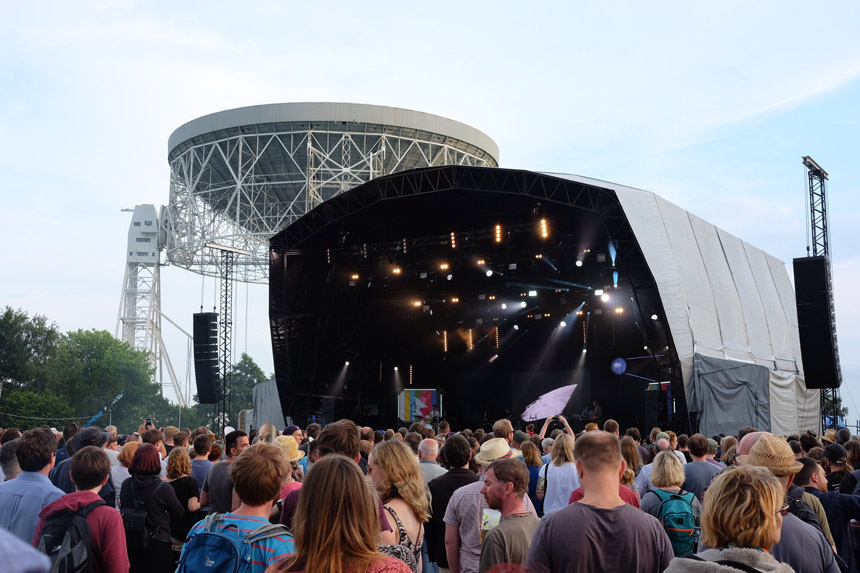
I went to Bluedot in 2016 and had a great time – dancing in a field against the backdrop of the Lovell Telescope was so good! In 2023, Bluedot will be held on 20-23 July.
Jodrell Bank on TV and film
Jodrell Bank is a total North West icon – in fact as I was writing this I was watching a rerun of Early Doors and one of the characters mentioned it! It’s fitting then that the Lovell Telescope has made plenty of appearances on film and TV.
Jodrell Bank was supposed to feature in sci-fi series Doctor Who in 1981. The last story of season 18 was called Logopolis and was set on a planet inhabited by mathematicians who can control time using the power of their equations.
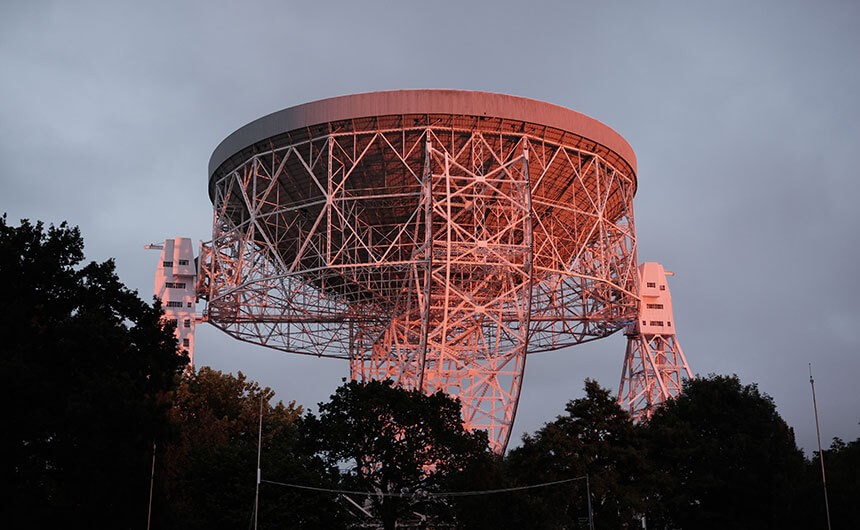
The Lovell Telescope was intended to provide the backdrop to the Fourth Doctor (Tom Baker) dying and regenerating into the Fifth Doctor (Peter Davison). In the end, the scene was shot with a scale model of the Jodrell Bank telescope. In 2019, a Blu-ray version was released with a new CGI version of the scene, this time shot on location at the real Jodrell Bank.
The BBC TV show Stargazing Live was broadcast from the control room between 2011 and 2016.
Jodrell Bank is mentioned in both the book and the film of The Hitchhikers Guide To The Galaxy.
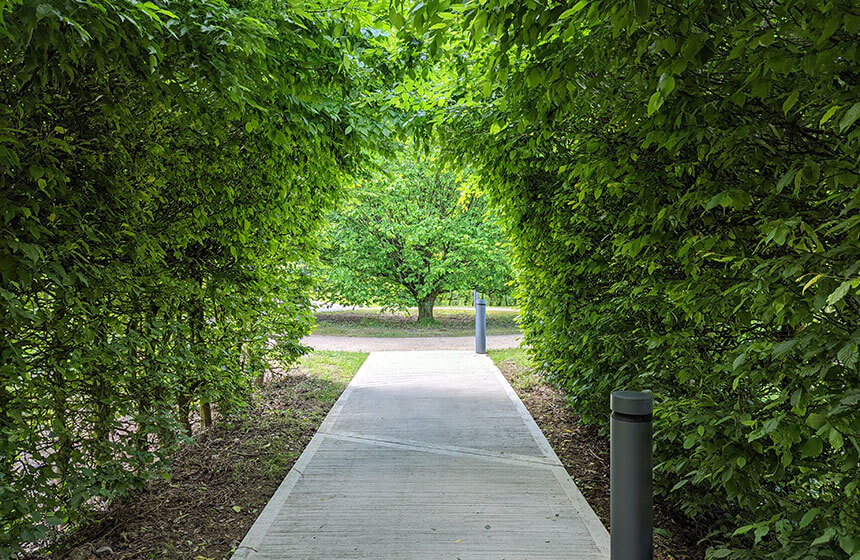
Visiting Jodrell Bank
You can visit Jodrell Bank every day except Mondays, from 10am to 4pm. Last entry is at 3pm, but it takes much longer than an hour to see everything at the site.
Buying tickets for Jodrell Bank
It’s best to book tickets in advance; by booking in advance you can be sure of getting in for the timeslot that you want, and you’ll also get an annual ticket which will allow you to visit again as much as you like in the next 12 months.
Tickets for adults cost £12. Children’s tickets are £8, while under-4s get in free. There are a few family ticket options to accommodate families of 3, 4 and 5.
It’s worth noting that your ticket doesn’t include the Dome Shows in the new First Light Pavilion. When I visited I saw one of the shows; it was ok, but I’m not sure I would have paid the £6 per person (£4 for children) ticket price.
How to get to Jodrell Bank
The best way to get to Jodrell Bank is by car. If you aren’t driving, the easiest route by public transport is a train to Macclesfield then a 20-minute taxi. There is a bus from Macclesfield that stops in Peover, just under 2 miles away. From Peover, you can walk along country lanes to get to the observatory and visitor centre, although it’s worth being aware that there’s no footpath for much of the way.
Given that you are in the middle of the countryside, public transport is challenging and you’re paying to get in, it’s a bit of a surprise that you have to pay for parking. Parking costs £4 per car, per day. You can buy it online when you book your entry tickets.
Facilities at the Jodrell Bank visitor centre
There are two cafes at Jodrell Bank, one in the new First Light building, the other in the Planet Pavillion, where you’ll also find the excellent shop. There are picnic areas spread around the site, some of which have a view of the Lovell Telescope.
There are plenty of toilets. The site is flat and relatively small, and they take accessibility seriously.
Related posts
If you enjoyed this post, you might enjoy these other articles about days out in and around Manchester:
- How to visit the Standedge Tunnels, a 200-year-old wonder near Manchester
- The Lancashire Panopticons: a series of otherworldly art installations in East Lancashire
- A dreamy day out in Wycoller, Lancashire
- Visiting Salts Mill and Saltaire
- How to spend one day in Manchester
Will you visit Jodrell Bank?
Pin it for later
